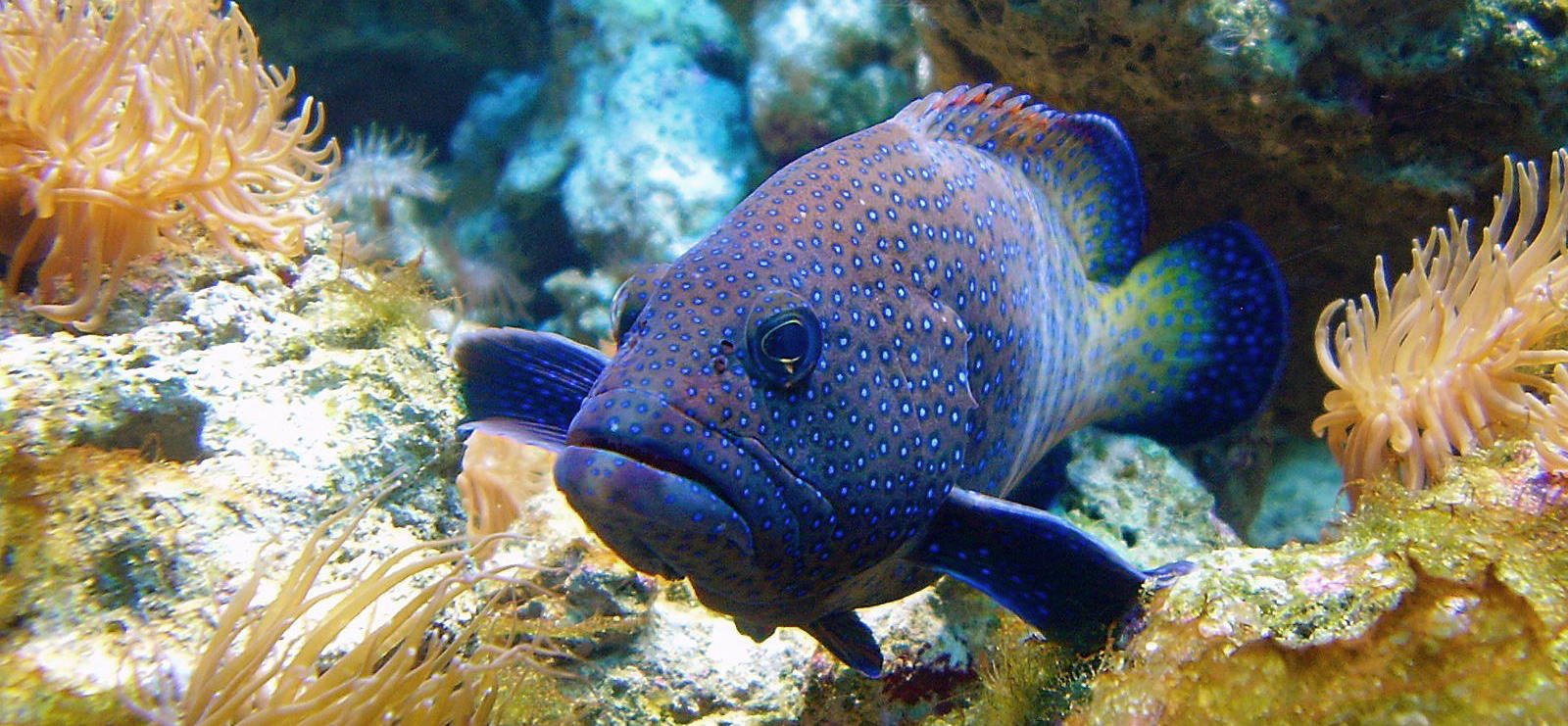

ABOUT CIGUATERA
WHAT IS CIGUATERA?
Ciguatera poisoning can occur when eating seafood that has accumulated ciguatoxins. These ciguatoxins are produced by microscopic algae called dinoflagellates that are epiphytic, meaning they grow attached to larger macroalgae or other substrates. These microalgae are found in shallow coastal waters around the world.
When fish or other marine organisms consume these algae, they can build up the ciguatoxins in their system. The toxins can bioaccumulate through the food web, so concentrations can be highest in fish that eat other fish. However, fish that feed directly on the algae can also build up very high ciguatoxin levels. When humans eat these fish or other types of seafood, they take in these toxins, which can cause serious illness and in extreme cases, even death.

WHAT TO DO IF YOU SUSPECT YOU HAVE CIGUATERA POISONING
If you suspect that you may have consumed ciguatoxins and may be suffering from ciguatera poisoning, please seek help from your doctor or nearest healthcare provider. Request that the attending doctor informs local public health authorities if ciguatera poisoning is diagnosed, in order for the case to be recorded.
SIGNS AND SYMPTOMS
Signs and symptoms of ciguatera poisoning include a range of neurological and gastrointestinal issues that can occur within 1-24 hours of consuming the contaminated seafood. The severity of the symptoms is dependant on the concentration of the toxin in the fish in conjunction with the individual susceptibility of the consumer. The symptoms can last from weeks to months, however in extreme cases may become chronic.
The symptoms of ciguatera poisoning can include:
- Numbness, tingling, or a burning sensation around the mouth, hands or feet
- Joint or muscle pains with weakness or cramps
- Vomiting, diarrhea, chills, itching, headache, sweating, and dizziness
- Reversal of temperature sensation
- Unusual taste sensations
- Difficulty breathing
- Extreme itchiness
- Nightmares and hallucinations
PREVALENCE
Knowledge of the global burden of the disease is fairly limited. Ciguatera poisoning is known to be underreported in official state systems as doctors may be unfamiliar with the disease, and knowledge of the reporting system is limited. According to the World Health Organization, it is estimated that up to 10% of the local population in the Pacific Islands is affected by ciguatera poisoning annually.
HOW CAN YOU REDUCE THE RISK OF CIGUATERA POISONING?
Distinguishing fish with ciguatoxins from those without is challenging, and there is currently no reliable rapid test method available. However, you can minimize the risk of ciguatera by following these precautions:
– Refrain from catching or consuming fish from areas known to have ciguatera. Speaking with local fishers or experts may be the best way to find this information if you are not sure.
– Avoid consuming the head, eggs, liver, or other viscera, as these tissues tend to contain higher concentrations of ciguatoxins compared to the flesh, potentially increasing exposure.
– If ciguatera symptoms arise, refrain from further consumption of that fish and promptly seek medical advice. It may be helpful to store a portion of the fish in the freezer for later laboratory analysis (~1 ounce) if symptoms develop.
– Be mindful that improper cleaning and storage of fish can lead to general food poisoning (not ciguatera).
HOW IS IT TREATED?
Currently, there is no universally proven treatment for ciguatera poisoning. The approach to treating ciguatera poisoning centers on relieving the symptoms experienced by individuals affected. Following the onset of ciguatera, specific foods may trigger relapses or intensify existing symptoms. It is generally recommended to abstain from consuming seafood, nuts, alcohol, and caffeine. Seek guidance from your healthcare provider for effective symptom management.
Eileen Nalley
Fisheries Extension Faculty
University of Hawai’i
Sea Grant College Program
Honolulu, HI 96822
enalley@hawaii.edu
Phone: (808) 956-7031

